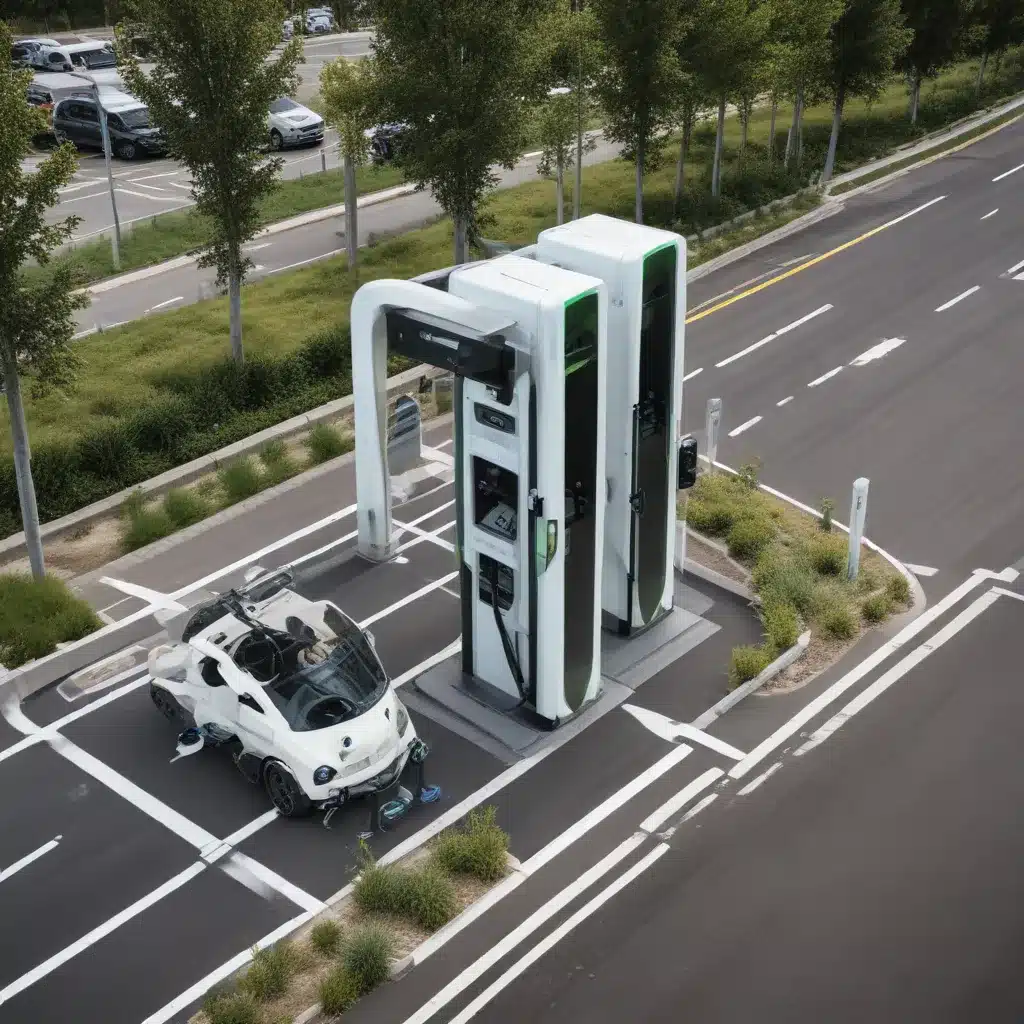
The world is undergoing a transformative shift towards sustainable mobility, and electric vehicles (EVs) are at the forefront of this revolution. As governments and automakers alike race to combat climate change and reduce carbon emissions, the integration of renewable energy sources into EV charging infrastructure has become a critical piece of the puzzle.
The Emergence of Electric Vehicles
In recent years, the global EV market has experienced exponential growth, with battery-electric vehicle (BEV) and plug-in hybrid electric vehicle (PHEV) sales reaching new heights. DNV, a leading energy advisory and certification body, predicts that by 2032, half of all new passenger vehicle sales worldwide will be electric. This surge in EV adoption is driven by a trio of factors: decarbonization, air pollution control, and improved affordability.
As countries and regions strive to meet ambitious climate targets, the transportation sector has become a key battleground. EVs, with their zero direct emissions, offer a viable solution to reduce the carbon footprint of personal mobility. Moreover, the shift away from internal combustion engines helps improve urban air quality, a pressing concern for many metropolitan areas.
Integrating Renewable Energy
To fully realize the sustainability benefits of EVs, the charging infrastructure powering these vehicles must also be decarbonized. This is where the integration of renewable energy sources, such as wind and solar, comes into play.
The Challenges of Grid Integration
Seamlessly integrating renewable energy into the power grid to charge EVs presents several technical and logistical challenges. Grid operators must carefully manage the intermittent nature of wind and solar, ensuring a constant and reliable supply of electricity to meet the growing demand from EV owners. Vehicle-to-Grid (V2G) technology, which allows EVs to feed excess energy back into the grid, holds immense potential to help balance supply and demand.
Distributed Energy Solutions
In response to these challenges, the industry is exploring innovative distributed energy solutions. Microgrids, localized power grids that can operate independently, are becoming increasingly prominent. These microgrids integrate renewable energy sources, energy storage systems, and smart grid technologies to provide reliable and resilient charging options for EV owners, particularly in areas with limited access to the main power grid.
Advanced Charging Infrastructure
To support the widespread adoption of EVs, a comprehensive and reliable charging network is essential. Beyond the development of traditional charging stations, the industry is exploring advanced technologies such as wireless charging, bidirectional charging, and dynamic charging (charging while the vehicle is in motion). These innovations not only enhance the convenience and efficiency of EV charging but also enable a tighter integration with renewable energy sources and the grid.
Technological Innovations
The mobility revolution is being driven by a wave of technological advancements that are transforming the EV landscape.
Battery Technology Advancements
One of the most critical developments is the rapid progress in battery technology. Improvements in energy density, charging speed, and lifecycle have addressed the longstanding concerns around range anxiety and battery degradation. Innovations in solid-state batteries, lithium-ion chemistries, and battery management systems (BMS) are paving the way for EVs to become more affordable and practical for a wider range of consumers.
Smart Grid Integration
The integration of EVs with the power grid is also being revolutionized through the rise of smart grid technologies. Advanced charging algorithms and load management systems can optimize the charging process, ensuring that EVs are charged during periods of high renewable energy generation or low grid demand. This not only reduces the strain on the grid but also maximizes the utilization of clean energy sources.
Renewable Energy Storage Systems
To further enhance the synergy between EVs and renewable energy, the development of efficient energy storage systems is crucial. Stationary battery storage units, pumped-storage hydroelectricity, and power-to-gas technologies (converting electricity to hydrogen) are all playing a vital role in storing excess renewable energy and making it available for EV charging when needed.
Environmental and Economic Impacts
The integration of renewable energy into EV charging infrastructure promises significant environmental and economic benefits.
Reduction of Carbon Emissions
By powering EVs with clean, renewable energy, the transportation sector can make significant strides in reducing greenhouse gas emissions and combating climate change. According to a study by DNV, the widespread adoption of EVs in Norway, supported by the country’s robust renewable energy policies, has prevented nearly 400 million tonnes of CO2 emissions from 2010 to 2050.
Cost-Effectiveness of EVs
The combination of renewable energy and advanced battery technologies is also making EVs more cost-competitive with traditional internal combustion engine vehicles. With lower fuel and maintenance costs, and the potential for vehicle-to-grid (V2G) revenue streams, EVs are becoming an increasingly attractive option for consumers and fleet operators alike.
Grid Resilience and Reliability
The integration of EVs and renewable energy also has the potential to enhance the resilience and reliability of the power grid. By leveraging the energy storage capacity of EV batteries and the flexibility of smart charging, grid operators can better manage peak demand, integrate intermittent renewable sources, and ensure a more stable and reliable electricity supply.
The mobility revolution is well underway, and the integration of renewable energy into EV charging infrastructure is a critical component of this transformation. By overcoming the challenges of grid integration, leveraging distributed energy solutions, and harnessing the power of technological innovations, the industry is paving the way for a sustainable, clean, and efficient transportation future. As the European Future Energy Forum continues to bring together experts and stakeholders from across the continent, the focus on this crucial intersection of renewable energy and electric mobility will undoubtedly be a key part of the ongoing dialogue.







